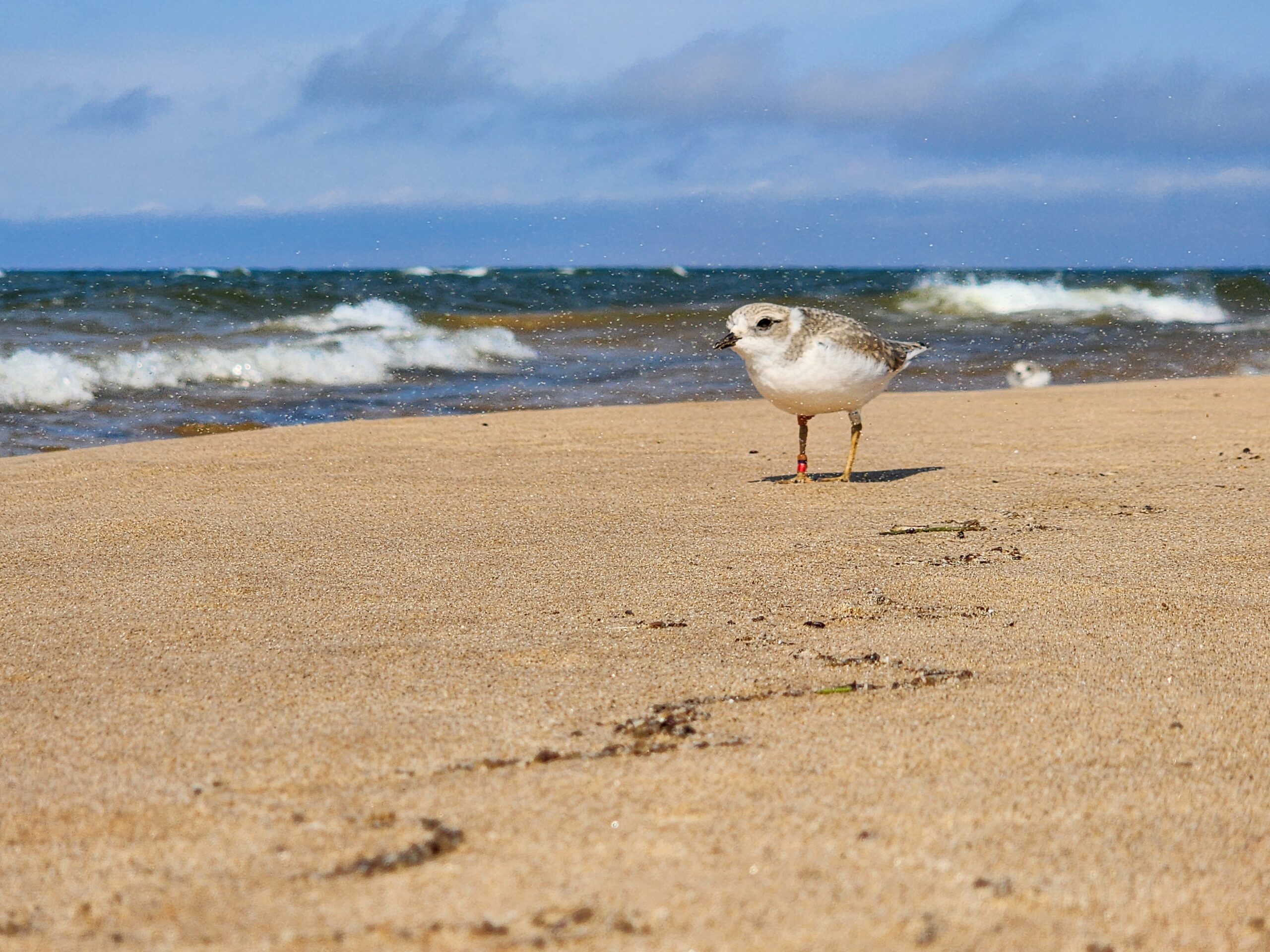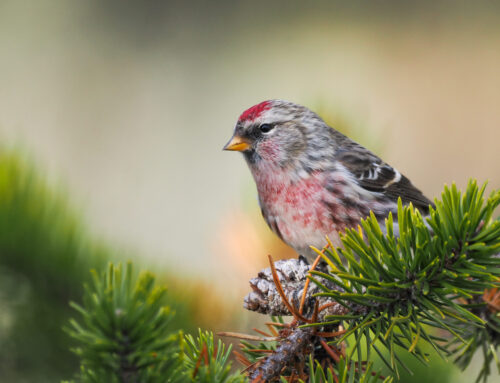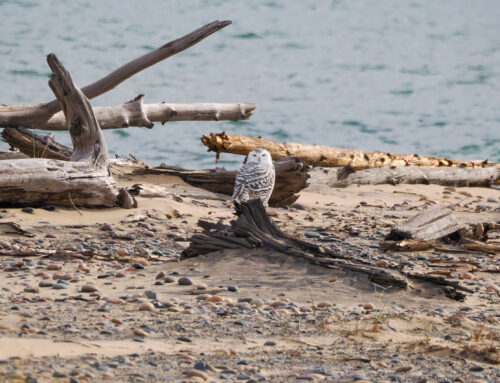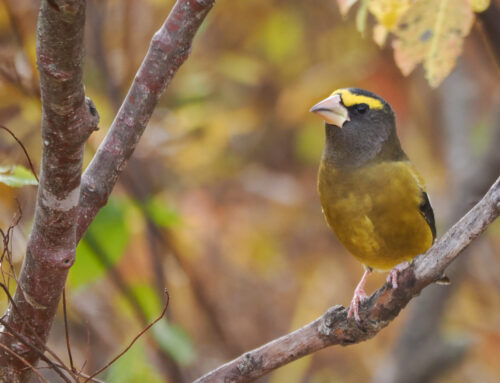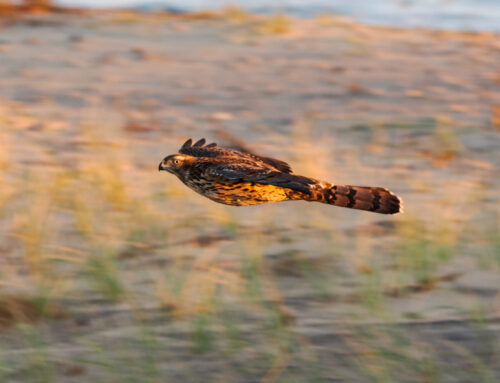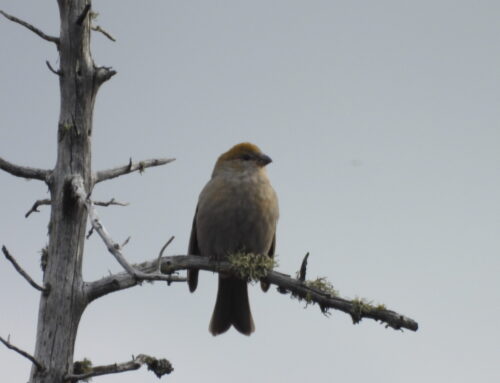Sunburning away again in Ploveritaville.
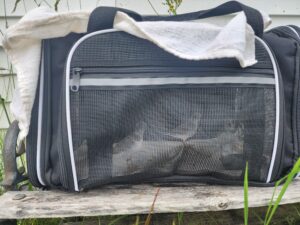
The captive-reared chicks in their carrier. Photo by Stephanie Owens
On Monday, July 15, three captive-reared Piping Plover chicks were released at Whitefish Point. They were salvaged as eggs from Sleeping Bear Dunes because their father went missing, which left the incubating duties solely to the mother. Once retrieved the eggs were incubated, hatched, and reared at the Captive Rearing Center at the University of Michigan Biological Station in Pellston.
This year the chicks were able to be sexed, to tell whether they were male or female. Whitefish received two females and one male. The hope is that since they were released here, they will return to mate next year at the same location.
The ideal conditions as to where specifically on the beach to set them free were somewhere within the vicinity of the other plovers (specifically the wild chick), but not right on top of them. I settled on the shore in front of the boardwalk entrance, thinking it was farther from heavy visitor traffic, but still near the other plovers.
The time came to release the chicks from their little carrier, and once the door was open they sprinted onto the beach. It was great to see these chicks exploring the wild for the first time, after only knowing their well-supervised environment. The chicks embraced their freedom and began to avidly fly around. Almost immediately as they did so, Wybie came in and started to terrorize the young. If they landed on the beach he would follow and aggressively chase them, causing the chicks to take flight only to be pursued in the air. This struck fear in me and made me question if I chose the right spot. Some of the chicks made their way east, only to find themselves in the same situation, being targeted by Lover Boy this time. After about five minutes the angst began to die down, and the chicks could finally rest.
For those curious, the chicks’ bands read as follows:
X,-:Of(K6),O/VR (Female)
X,-:Of(K4),O/VB (Female)
X,-:Of(K5),O/VO (Male)
Later in the day, the two females were foraging along the shore near their release spot. But I found the male by himself at the eastern edge of the Seney Wildlife Refuge property. I suspected he was over here to escape the chaos of the main plover grounds.
The following day I discovered the male even further east, foraging right near the harbor. I then walked west to see who I could find, and about a mile past the lighthouse, I came upon a plover pilgrimage. Bog, Lover Boy, Bunny, Vie, and the captive-reared females were all foraging along the shore almost in a clump. If there was a reason for their congregation, I was unsure. It could be they are preparing to leave for their wintering grounds, or perhaps the foraging opportunities were more ample here due to low plover activity.
Each day that I see the captive-reared chicks I celebrate because it means they were able to adapt to wild plover living conditions and survive on their own.
I also celebrate each day that I see Baby. This was the first brood I’ve monitored solo, and now he’s the last one standing. I also consider Baby my grandchild. His father Little Bill Bob came from a brood I monitored my first year in Grand Marais. He was salvaged as an egg and captive-reared because his father went missing a few days into incubation, similar to what happened with the chicks we just received.
Baby is growing like a weed and is now counted as fledged. I haven’t seen him fly yet, but I eagerly wait for the day he does so. He is no longer a tiny little chick, and with a quick glance could be mistaken for an adult. Vie no longer tends to him as she is due to leave any day. Now it’s just Bob and the Baby, making it on their own.
~ Stephanie Owens
2024 Piping Plover Monitor
Featured photo: A female captive reared chick (R chick). Photo by Stephanie Owens

O Chick (Captive rear)
Photo by Stephanie Owens
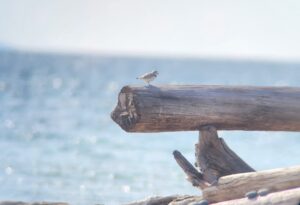
Little Bill Bob on a log
Photo by Stephanie Owens
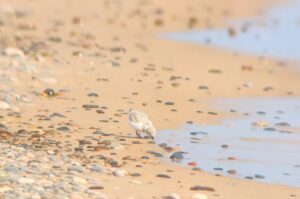
Baby foraging along shore
Photo by Stephanie Owens
Piping Plover monitoring is a collaborative effort between Michigan Audubon and Seney National Wildlife Refuge (USFWS).
You can keep up with the 2024 Piping Plover action at WPBO by reading Stephanie’s blog posts and following WPBO’s social media (Facebook, Instagram, and X).
Stephanie Owens: 2024 Piping Plover Monitor
 Stephanie is a native Yooper and a recent graduate of Lake Superior State University. She earned a Bachelor of Science in Conservation Biology and completed her senior thesis on the distribution of per- and polyfluoroalkyl substances in waterways in Eastern Upper Peninsula. Previously, she worked as a Piping Plover monitor in the U.P. for two seasons and conducted Black Tern and habitat surveys during that time as well.
Stephanie is a native Yooper and a recent graduate of Lake Superior State University. She earned a Bachelor of Science in Conservation Biology and completed her senior thesis on the distribution of per- and polyfluoroalkyl substances in waterways in Eastern Upper Peninsula. Previously, she worked as a Piping Plover monitor in the U.P. for two seasons and conducted Black Tern and habitat surveys during that time as well.

